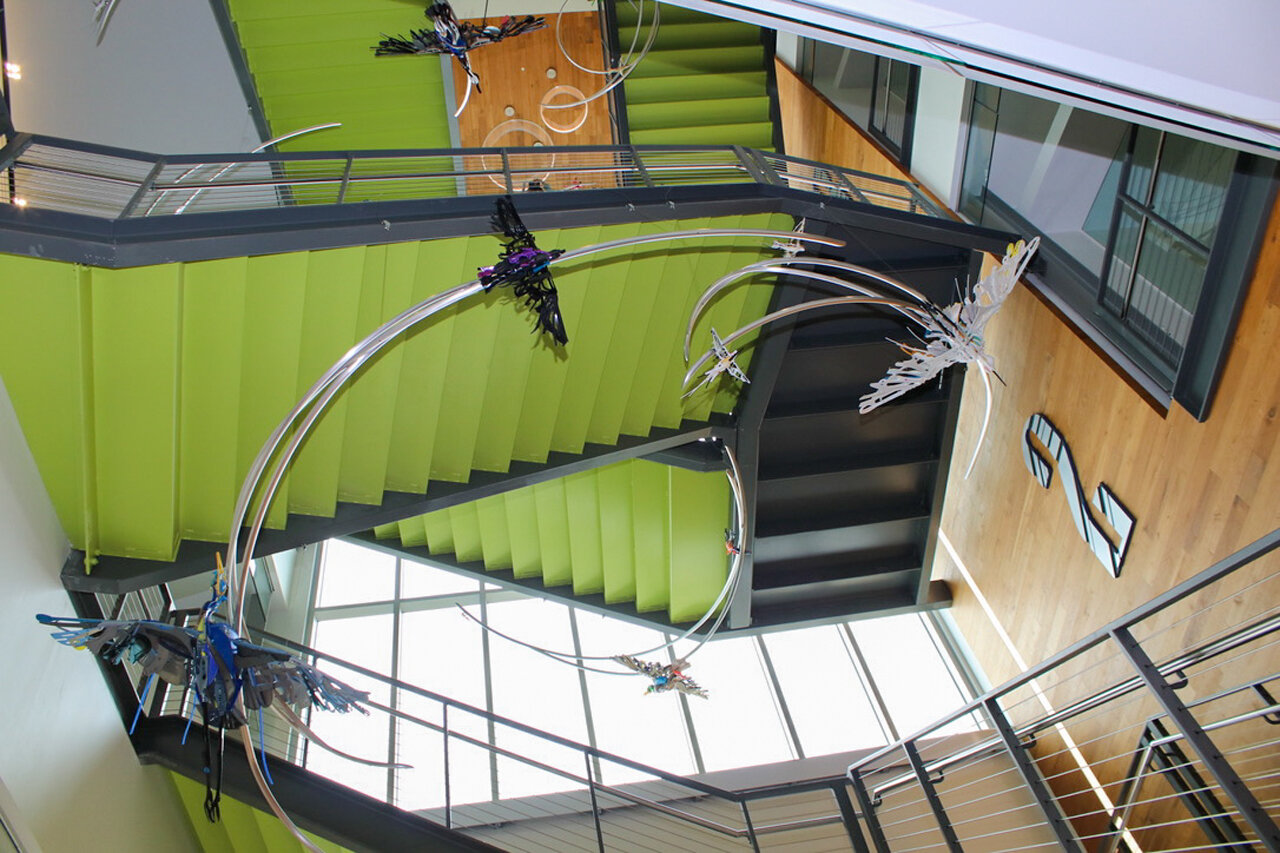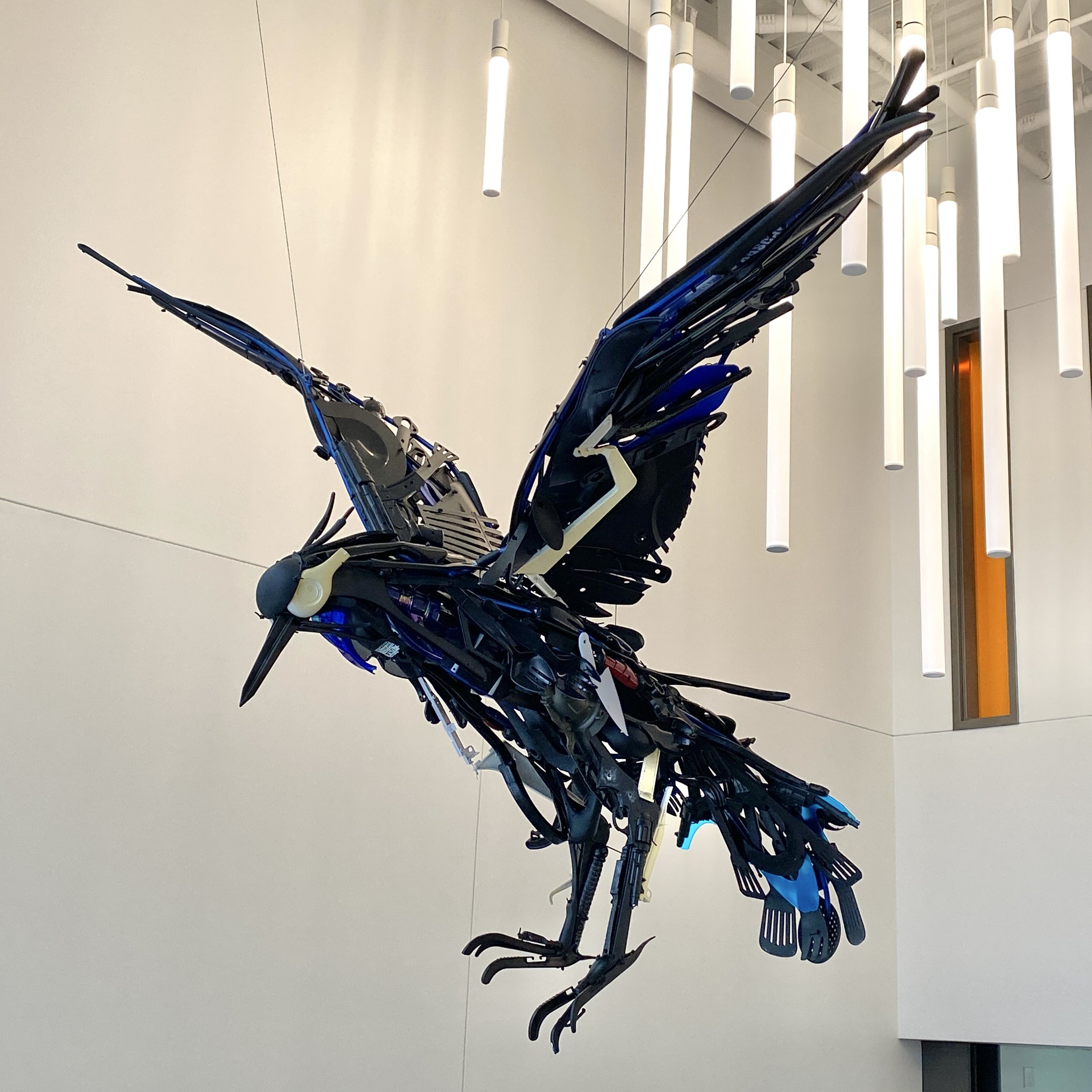
R E C L A I M E D CR E A T I O N S
Breathing new life into discarded materials, crafting environmental consciousness into forms of tangible beauty
Like you, I believe in creating a more harmonious future with our beautiful planet.
My artistic passion lies in transforming discarded pieces into dynamic sculptures that pulse with life and movement.
R E C E N T P R O J E C T S
Artist Statement
I imagine a large whale swimming in the ocean. I imagine being this whale. When I breathe, my breath travels inside the body of this whale. Then I visualize the shape of this breath. Breath becomes a brush stroke. When I look at the plastic objects in front of me, I look for a shape that is similar to the brush stroke I visualized. When my eyes follow the shape, I try to feel for the breath moving through the whale. There must be a line that starts on the outer surface of the whale, then travels to the space inside the body, then exits through the other side. This does not necessarily occur where the respiratory organs are anatomically located in the body of the whale, but more in the imagined lines, like how people feel for breath traveling through different parts of the body in Yoga and other meditation techniques. If it becomes too crowded with brushstrokes inside the whale’s body that it looks like the energy is stagnant, I remove a few items that are blocking the flow. The first few plastic items that I attach on an animal sculpture almost always need to be removed later on.
I believe the best way for artists to help reduce waste is to show how beautiful these materials can be, and what can be done with these mundane objects and materials. When we think of these things as beautiful, we value them.
Storm the Thunderbird at the Windgate Museum

Sayaka Ganz was born in Yokohama, Japan and grew up living in Japan, Brazil, and Hong Kong. She received a Bachelor of Fine Arts degree from Indiana University Bloomington and continued to create welded sculptures of animal forms independently.
Sayaka is an expert at finding beauty in unexpected places. Using reclaimed metal and plastic objects, Sayaka’s recent sculptures depict animals in motion with rich colors and energy. She describes her style as “3D impressionism”, creating an illusion of form using plastic objects as brush strokes that become visible upon observation from close proximity.




